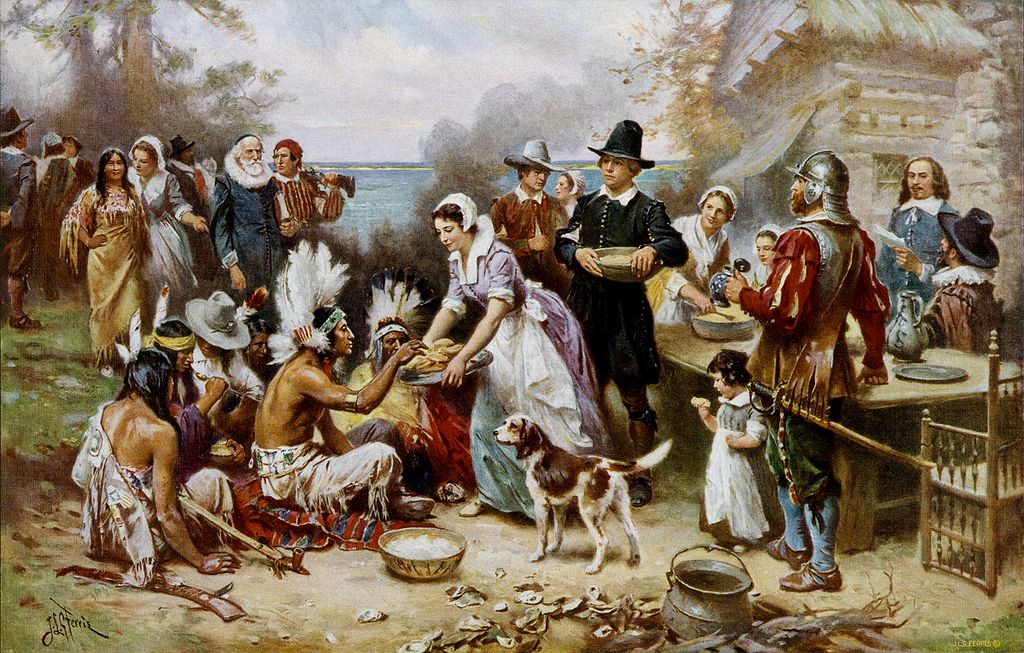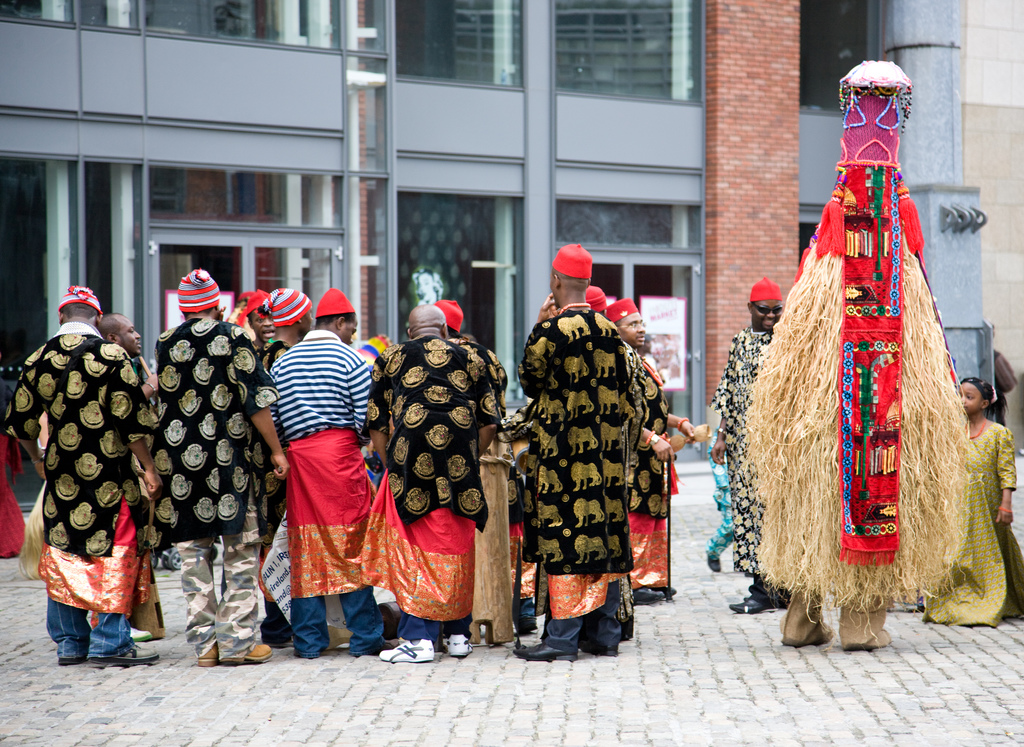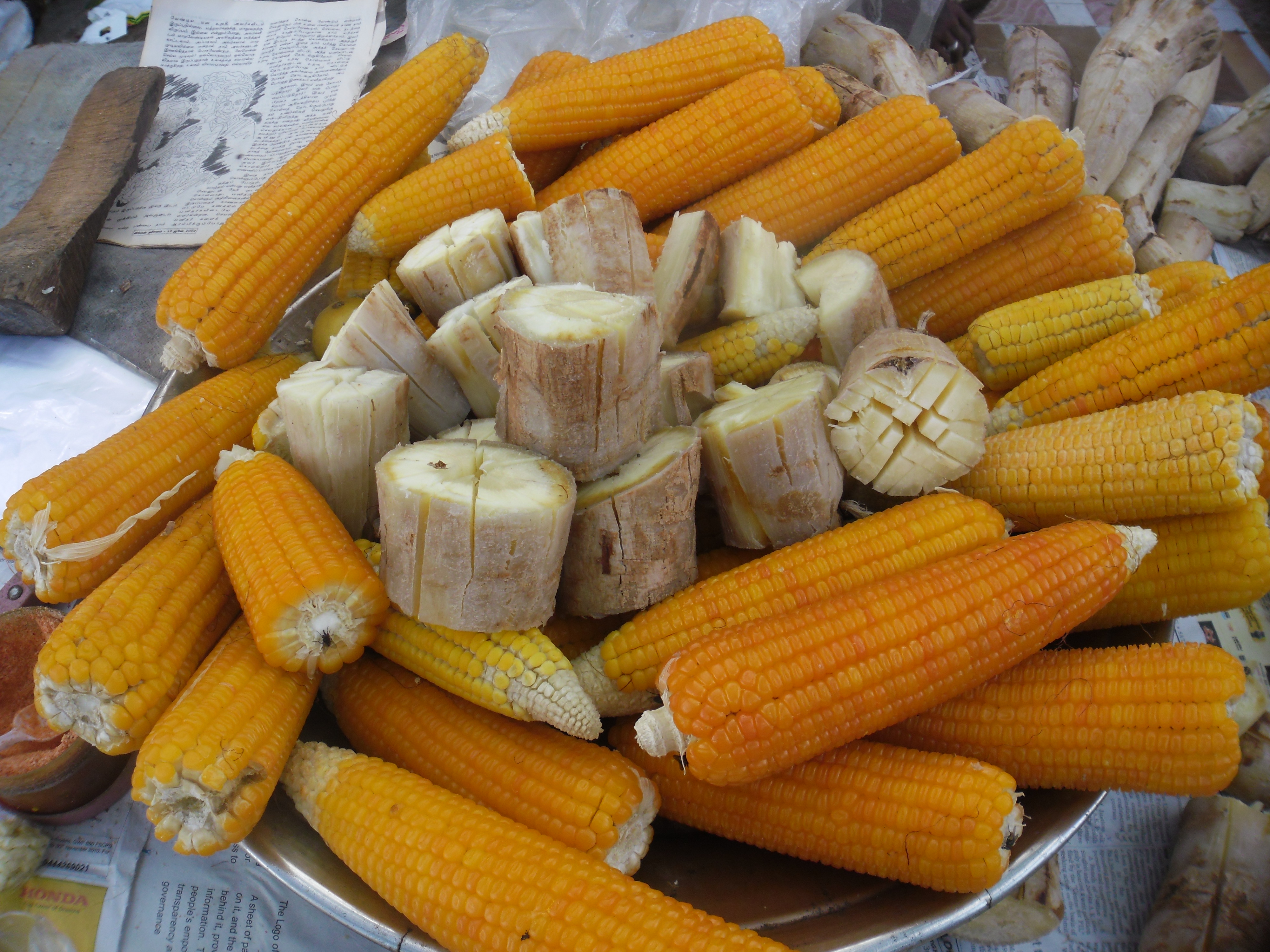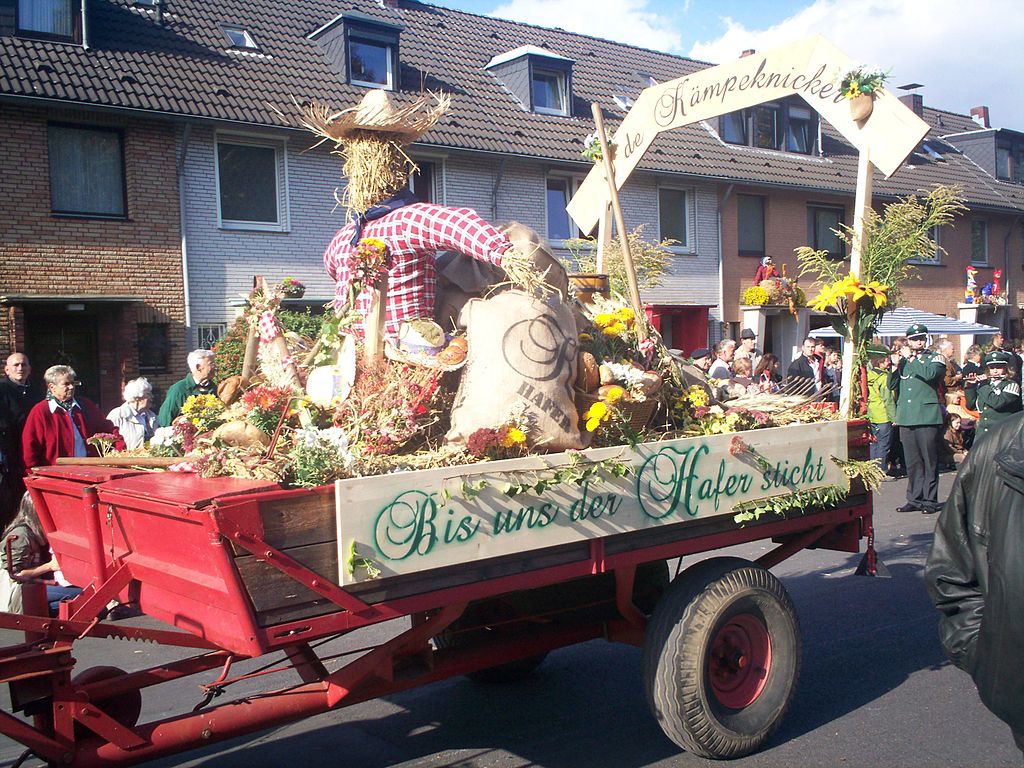Thanksgiving feels like a uniquely American holiday, but in reality, it comes from a long tradition of harvest festivals.
Thanksgiving around the world is not like Christmas or the New Year in that they happen simultaneously. Rather, Thanksgiving is just the American version of a harvest festival in which one recognizes that they are grateful for family, friends, and their way of life. What separates the American celebration from other harvest festivals is the mythology that arose around it, and how central it is to the American identity.
Yet, in practice, Thanksgiving around the world and in America are formed around the same core idea: We’re lucky to have what we do. Amazingly, this is a belief shared across generations, cultures, and socio-economic classes. It’s a uniquely human thing to look at your surroundings, your life situation, and be grateful.

A Bit About Thanksgiving Around the World
Economic and income disparity is much more of a problem today than it ever was. There are kids in “First World” cities that have no idea where their next meals are coming from. The middle class, which helped make the 20th Century the “American” century, are struggling more than ever. Yet, even the poorest in a society will likely find someone to feed them on Thanksgiving. And, impossibly in the minds of those of means, they’ll be grateful for it. Harvest festivals, Thanksgiving, and other such celebrations are a testament to the human spirit and our ability to find joy anywhere Let's explore Thanksgiving around the world in more depth.
The History of Thanksgiving

Credit: Hildgrim, Flickr
From a very young age, children in America are taught the myth of Thanksgiving, much as they are taught about Santa Claus and the Tooth Fairy. However, the real history does parallel the myth somewhat. Myths have the distinct advantage of ending, while reality goes on. A Thanksgiving-like festival dates back to the 1600s, where settlers in modern-day Canada and elsewhere celebrated it. The early Virginia settlers celebrated annual Thanksgiving festivals to commemorate the day they arrived in the New World. Yet, the Pilgrim settlers at Plimouth Plantation are the group who are created with being the source of the holiday myth.
The Pilgrims were unprepared for winter of 1620, their first year in their new homes. Members of the Wampanoag tribe gave them food and helped the settlers survive. So, the next year at the harvest, the Pilgrims celebrated with a three-day festival. All remaining colonists who arrived on the Mayflower, about 50, and 90 Native Americans attended the feast. The four women who survived that first winter prepared the meal, along with children and servants. This was repeated two years later in 1623 after the end of a bad summer drought. Once America became its own nation, citizens celebrated Thanksgiving based on presidential declarations. Finally, in the fall of 1941, Congress passed a law establishing Thanksgiving as the last Thursday in the month of November.
The Myth of Thanksgiving

As mentioned above, kids are taught the myth of Thanksgiving in school, specifically that the Native Americans and the new settlers became a symbiotic community. This, sadly, is not true. In Plymouth colony, for example, the peace with the Wampanoag tribe fell apart in a generation. All throughout the colonies and, later, the United States, Native Americans were massacred, cheated, and moved “out of the way” of the evolving American society. It is important to know that the history of the United States is flawed and full of contradictions. Acknowledging this is the only way to truly grow and be better, both individually and on a societal level. This is why the “myth” of Thanksgiving is so important.
The “First Thanksgiving” actually happened, so already parents and early-grade teachers are on firmer ground than with Santa. It’s ultimately a good thing that children’s first ideas of Thanksgiving is a story of people from different backgrounds helping each other and then celebrating together. Maybe that’s not what America was the whole time, but it always represents what it could be. No one wants their kids to grow up believing some old guy breaks into homes and leaves gifts for kids. But, for a time, it’s good to let kids think they live in a world where such things are possible. That the good they do that no one ever sees will be rewarded. That’s why the Thanksgiving myth is as important as the history of it. Equally as important, is exploring Thanksgiving around the world.
The Harvest Festival Around the World

Credit: Hildgrim, Flickr
Of course, the harvest festival dates back thousands of years. Wherever humans grow things, it seems, they want to throw a party as a reward for the hard work of growing it. Since these festivals depend on growing seasons, most of them take place at various times in the Autumn. Thanksgiving around the world usually takes place in late September or early October. Thanksgiving in November is somewhat late in the year to be a true harvest festival, but Americans do love to be different. The harvest festival is both a religious and civil tradition.
For example, in the colonial days in the Americas, Thanksgiving (like much of everything else) was a deeply religious ceremony. However, the second Thanksgiving in 1623 was not an edict from the church but rather from Governor Bradford, the civil authority in the region. Unlike Christmas or Passover, the principles celebrated in Thanksgiving around the world are generally universal. Thus faiths of all kinds and secular institutions can all get behind it. What you will see as we look into the celebrations of this kind in other countries, the human elements at the center of them are exactly the same.
Thanksgiving Around the World in Ten Countries:
There are dozens, probably hundreds, of harvest festival traditions in as many cultures across the planet. It's a common celebration, somewhat like Halloween. They are all interesting and important to those who celebrate them. We’re going to take a quick look at ten of them at all points across the globe. You’ll see similarities and differences in Thanksgiving around the world, but each tells a story that we should be grateful to be alive.
1. Canada

Credit: Lojjic, Flickr
First on the list of Thanksgiving around the world is Canada. Canada likely held the first Thanksgiving celebration in North America, but ironically their Thanksgiving is still not a full-on official holiday nationwide. The first celebration happened on a journey in 1578 led by Martin Frobisher seeking the Northwest Passage. Plagued by ice, storms, and other tragedies, the minister suggested they celebrate their survival. Over the next two centuries, European settlers who first lived in the American colonies brought the tradition up with them. Canadian Thanksgiving actually features most of the trappings of the modern American version of the holiday. Like in America the date of the holiday moves each year, but since 1957 it takes place on the second Monday in October.
2. China

Credit: Terence Ong, Wikimedia Commons
In China, their harvest festival dates back to around 1600 BCE, meaning that they have been celebrating the harvest for more than two millennia. Originally a festival of moon worship, this symbology remains in the modern celebration. The Mid-Autumn Festival takes place on the 15th day of the 8th lunar month, meaning late September or early October.
Mooncakes are a treat enjoyed by adults and kids alike. They are pastries filled with either lotus seed paste or sweet bean paste. Cassia wine is a sweet spirit just for the adults. It’s also a festival known for the paper lanterns, from colorful ones hanging from the ceilings to sky lanterns that fly off into the night. These they sometimes write riddles on for anyone who finds them after they fall back down. This is also a romantic festival, with a number of couples choosing to celebrate marriages at this time.
3. Ghana and Nigeria

Credit: Informatique, Wikimedia Commons
There are so many Thanksgiving-like festivals among the countries and tribes on the African continent. The Festival of Yams is precisely what it sounds like. Usually taking place in August or September, it’s meant to celebrate the local harvest of yams. There is a competitive edge to this harvest festival, as the families and farms who participate all want to have the biggest crop. Villages come together, and the harvests are shared, hopefully so everyone has enough to make it through the year. The occasion is marked with parades, dancing, and, of course, all the yams you can eat. The tradition supposedly dates back to the Igbo people of Nigeria, who made the celebration the mark of their new year. It meant that people should enjoy new yams and not the dried-up, old remnants of the last crop.
4. Liberia

Credit: Wikimedia Commons
Liberia is a nation whose roots go back to 1847, when freed slaves in America returned to the continent their ancestors were stolen from. Yet, as many of the first settlers came of age in America, they brought some of those traditions to their new country. Thus, Liberian Thanksgiving looks a lot like American Thanksgiving did in the early 19th century.
Although rather than the final Thursday in November, Liberian Thanksgiving falls on the first. It starts with a church service, as Thanksgiving was primarily a religious holiday at the time. It wasn’t until the middle of the Civil War that it became a civil holiday in the U.S. After that there are crop auctions, which are followed up by a feast at home. Though instead of turkey, mashed potatoes, and green beans, the traditional Liberian fare is roasted chicken and mashed cassavas, with fresh fruits and vegetables.
5. Norfolk Island, Australia

Credit: Steve Daggar, Wikimedia Commons
The American version of Thanksgiving migrated all the way across the globe to Australia, or to Norfolk Island at least. Originally a British penal colony, whalers and traders would frequently stop at the small island. American trader Isaac Robinson arrived in November in the late 1800s. While there, at a local church, Robinson hosted a traditional American Thanksgiving. Unfortunately, Isaac soon fell ill and passed away. However, his legacy is that the Thanksgiving tradition remains with the 2000 or so residents. Celebrated on the last Wednesday in November, their meal is traditionally pork, chicken, and bananas. But they still have pumpkin pie.
6. Japan

Credit: Katorisi, Wikimedia Commons
Japan has four harvest festivals, three of which fall around the time of Thanksgiving and one is more of a pre-harvest, fertility celebration in the spring. Niiname-sai was a harvest, new year festival in which the Emperor of Japan gave thanks to Shinto deities. The date changed throughout the centuries, until it became fixed during the Meiji period on November 23. It shares the date with Labor Thanksgiving Day, a secular holiday established after the World Wars to reflect workers’ rights in the new Japanese Constitution. Buddhists in Japan also celebrate the Mid-Autumn Festival, though they trade lanterns for decorations made from pampas grass and mooncakes for rice cakes. Edamame, chestnuts, taro, and sake are also consumed in plenty during these festivals.
7. Germany

Credit: Praguepower, Wikimedia Commons
In Germany, the harvest celebration is a primarily religious holiday that actually shares more in common with the mid-Autumn festival in China than Thanksgiving in America. It is typically celebrated on the first Sunday in October, and it’s not actually a family-focused holiday. Both Catholics and Protestants start the day in church, and baskets of the harvest are placed on the altar and blessed. That food is usually distributed to the poor. At night they celebrate with feasts and festivals, including lantern parades. Instead of mooncakes, however, they eat mohnstreizel, a sweet bread topped with poppy seeds. These parades often feature Chinese-themed floats, especially featuring dragons.
8. Malaysia

Credit: Uwe Arnas, Wikimedia Commons
In Malaysia, and elsewhere, their harvest festival lasts a full month and takes place in May. Originally celebrated by the ethnic Kadazan-Dusuns, it’s expanded in scope and reach in the country over time. This is a major holiday based on their religion, Momolianism, whose tenets we can all get behind. They believe the Earth is the “center” of the spiritual universe and the land a gift from their creator. It connects them to the past but also to the future. The harvest is a celebration of the creator’s gift. The beauty pageant to select a harvest queen still goes on to this day. This also coincides with another festival, Gawai Dayak, which began as a holiday in the 1950s to help expanded the Dayak community. Held on the final day of May, it ends with a large feast. The family then sings, dances, and recites traditional poems.
9. Israel

Credit: oseh_shalom, Wikimedia Commons
Sukkot is an eight-day observance that takes place on the 15th day of the month Tishrei, the first of the Jewish civil year and the seventh of the ecclesiastical year. While the Torah does refer to this as a harvest festival, it also calls it the “festival of booths.” Families construct a sukkah, which is a temporary hut. Symbolically (or literally) they will sleep in the hut for eight days to honor the 40-year period of wandering the desert after Moses led the Israelites out of Egypt. Yet, some treat the time in the sukkah as a holiday, eating nicer-than-usual food and entertaining guests. It’s a celebration marked by outings, events, and group meals.
10. India

Credit: Bill Bourne, Wikimedia Commons
The peoples of the Indian subcontinent have more than two dozen very different harvest rituals, most of them religious and many which overlap. At every point in the year, someone is celebrating a harvest of something. The main harvest festival is the Hindu celebration of the sun gods known as Makaraa Sankranti among the Hindu, Pongal among the Tamils, Maghi by the Sikhs, and other names. Whatever they call it, celebrants don’t just gather with their families, they gather with the whole town. Socialization is a big part of this holiday, with bonfires, feasts, parades, dancing, and kite-flying. Usually, this festival falls on the 14th or 15th of January.
The real meaning of Thanksgiving around the world is not the harvest nor gratitude, it’s recognizing your own good fortune.
Life is a series of struggles, and it always ends the same way, eventually. If humans thought like this, we’d never accomplish anything. We’d be drowned by our own sadness and fear of the future. Thanksgiving around the world and other celebrations like it are brilliant expressions of human defiance of that fact. It’s a celebration of the end of life cycle, the fruits of which we consume. In those moments, we are meant to realize how lucky we are to have people to share it with. It’s where food, family, community, and compassion are supposed to come together. Sure, maybe your Thanksgiving is less a beautiful human ritual and more two uncles fighting over politics while the kids fight over the drumsticks. Still, it’s the only family and friends you get. How lucky we are. Thanksgiving around the world embodies this.
What do you think? What’s Thanksgiving mean to you? Share your thoughts, reactions, and experiences in the comments below. Don’t forget to share the article on social media, so your friends can get in on the conversation about Thanksgiving around the world.
Related Article: Thanksgiving Traditions You Should Know Before This Holiday Season


